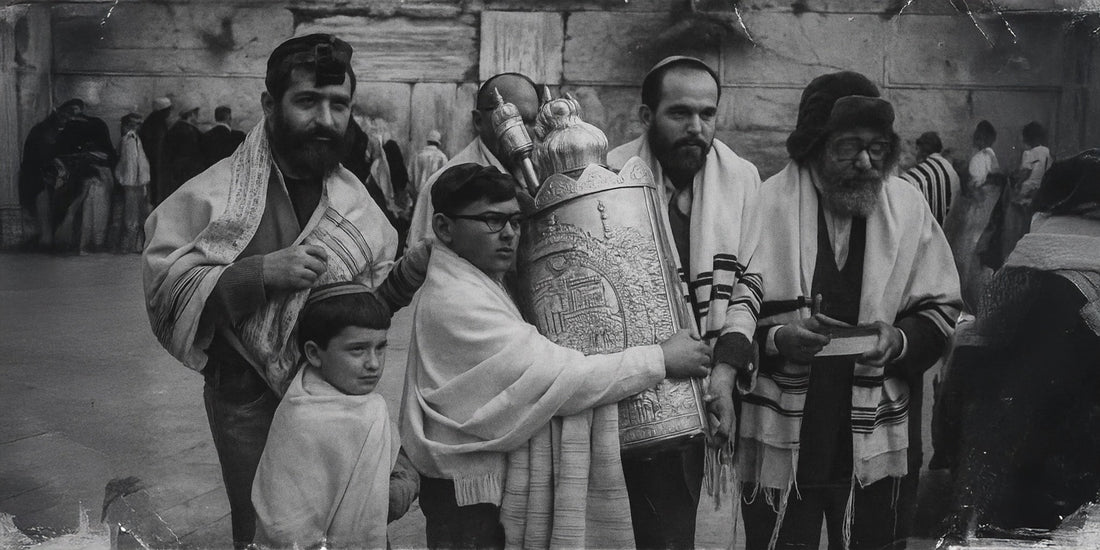
Bar Mitzvah and Bat Mitzvah: Growing up in Judaism
In Jewish tradition, the Bar Mitzvah (for boys) and the Bat Mitzvah (for girls) mark one of the most significant rites of passage in a young person's life: the step into religious adulthood. These special holidays are far more than just a celebratory occasion – they symbolize responsibility, identity, and a deep connection to Jewish values and community. The Bar Mitzvah or Bat Mitzvah is not an end point, but a new beginning. Young people begin to live their faith and their role in the Jewish community more consciously. It is a moment of pride – for the family, the community, and especially for the young people themselves. Typically, the Bar Mitzvah and the Bar Mitzvah of an individual young person are celebrated to emphasize individual maturity and achievement.
What does 'Bar Mitzvah' mean ' and Bat Mitzvah '?
Literally translated, 'Bar Mitzvah ' 'Son of the Commandment ' and Bat Mitzvah ' 'Daughter of the Commandment'. This moment marks the transition from childhood to adulthood: boys Boys are considered religiously mature at the age of 13, and girls at the age of 12. They are now responsible for fulfilling the commandments (mitzvot) of the Torah themselves – previously, this responsibility lay with their parents.
Religious significance
With the Bar or Bat Mitzvah event, young people receive the right (and the obligation) to participate in religious rituals:
From then on, boys may be called to the Torah (Aliyah) and participate in the minyan. A minyan is the minimum number – traditionally 10 Jewish adults – that is necessary to be allowed to perform certain Jewish prayers and rituals in the synagogue.
Girls, especially in liberal congregations, may also lead a Torah reading, recite a Dvar Torah (an interpretation of the Torah), or make other active contributions to the service.
This religious maturity is usually expressed in a solemn Shabbat service in the synagogue.

Preparation for Bar/Bat Mitzvah
The preparation time is intensive and includes:
- Learning the Torah portion (parashah) that is read on that Shabbat.
- Knowledge of Hebrew and liturgical knowledge.
- The discussion of Jewish ethics and history.
This time is often accompanied by religious instruction, individual lessons with rabbis or cantors, and support from family and the community.

The party
The centerpiece of the Bar or Bat Mitzvah celebration is the Shabbat service in the synagogue—that is, the Saturday morning service. In some congregations, the ceremony may also take place on another weekday or holiday, but Shabbat is the most common.
Course of the service (typical course):
-
Welcome from the community:
The young person is ceremoniously welcomed into the synagogue, often with special mention in the community newsletter or on a program sheet. -
Torah reading (Aliyah):
The central moment: The Bar Mitzvah or Bat Mitzvah is called to the Torah – that is, he/she reads or recites (in liberal congregations) a section of the Torah (five books of Moses) and/or the Haftarah (section from the Prophets) in Hebrew. -
Dvar Torah:
This is a short speech in which the young person interprets and explains the text read. It is a personal exploration of Jewish faith and ethics, often combined with a thank you to parents, teachers, and the community. -
Blessings and rituals:
Traditional blessings are recited before and after the Torah reading. In Orthodox communities, only boys read from the Torah publicly; girls have a different, often separate, ceremony. -
Songs and prayers:
The service is accompanied by traditional songs and prayers. Sometimes the young person also leads parts of the liturgy. -
Parents’ blessing:
In many communities, parents recite an emotional blessing over their child – a special moment, often accompanied by tears and pride.
The religious part is usually followed by a large celebration—it can range from a family gathering to an elaborate event with food, music, and dancing. In many cultures, it is also customary to present gifts, especially religiously significant objects or monetary donations, which symbolize the new responsibility.
Differences in religious movements
In Orthodox communities, Bat Mitzvahs traditionally do not take place or are celebrated more privately, whereas Bar Mitzvahs are highly valued. In liberal, conservative, and progressive communities, however, Bar Mitzvahs and Bat Mitzvahs have almost equal significance for young people in their coming of age.
Conclusion
Bar Mitzvah and Bat Mitzvah are far more than traditional rituals – they embody young people's conscious entry into a mature, religiously responsible role within the Jewish community. These ceremonies combine spiritual depth, personal development, and communal connection. They not only honor the religious learning and individual maturity of the young people, but also strengthen the bond between generations, tradition, and the present. Whether in the solemn service or the joyful celebration following, this moment remains a formative life event for many, cementing pride, belonging, and identity.
